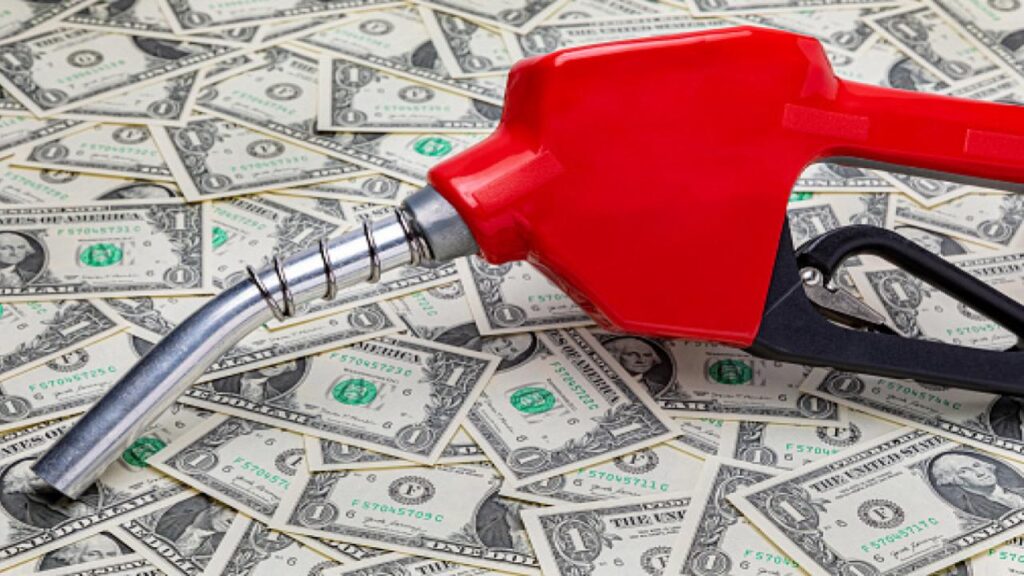Gas prices in Canada have taken an unexpected dip, marking the biggest drop since April. For many drivers across the country, this is more than just a relief at the pump — it’s a shift that could impact everything from daily commutes to long-distance travel plans. Whether you’re filling up for work, school, or a weekend getaway, understanding why gas prices are falling and which cities are benefiting the most can help you make smarter financial decisions.

If you’re wondering whether your city made the list of places with the most significant drops, you’re not alone. From coast to coast, Canadians are noticing changes at the pumps. In this article, we’ll explore what’s behind the recent price decline, highlight the cities seeing the steepest drops, and offer practical tips to help you take advantage of lower fuel costs. We’ll also provide a detailed breakdown of current trends, expert insights, and real-world examples to keep you informed.
Biggest Gas Price Drops in Canada (April – Present)
| City | Price in April (CAD/L) | Current Price (CAD/L) | Drop (%) | Savings Over 50L Fill-Up |
|---|---|---|---|---|
| Vancouver | $1.98 | $1.64 | -17% | $17.00 |
| Calgary | $1.62 | $1.38 | -15% | $12.00 |
| Toronto | $1.75 | $1.52 | -13% | $11.50 |
| Montreal | $1.67 | $1.46 | -12.5% | $10.50 |
| Halifax | $1.71 | $1.50 | -12% | $10.50 |
The biggest gas price drop since April has brought welcome relief to Canadian drivers, especially in cities like Vancouver, Calgary, Toronto, Montreal, and Halifax. Understanding the factors behind this decline — such as falling crude oil prices, a stronger Canadian dollar, and efficient refining — helps drivers make informed decisions. By using gas rewards, planning trips wisely, and adopting fuel-saving habits, you can maximize your savings. While prices may rise again later in the year, staying informed and proactive ensures you’re always ready for the road ahead.
Why Are Gas Prices Dropping Across Canada?
Several factors contribute to the recent drop in gas prices, and understanding them helps paint a clearer picture of what’s happening at the pump.
Crude Oil Prices Fall
One of the biggest reasons gas prices have dropped is the decrease in crude oil prices. Crude oil makes up about half of the cost of gasoline in Canada. When global demand slows — due to economic slowdowns, increased renewable energy use, or improved efficiency in vehicles — the price of crude oil often follows suit.
In early 2025, the global economy saw slower-than-expected growth, especially in major markets like China and the U.S. This led to reduced demand for oil, causing prices to fall. According to data from the International Energy Agency (IEA), global oil demand growth slowed by nearly 15% compared to projections earlier in the year.
Lower Refining Costs
Refineries convert crude oil into gasoline, and their operational costs play a big role in determining final prices. Recently, refineries have been running more efficiently, and maintenance shutdowns — which typically cause supply disruptions — are fewer than usual. This has helped reduce production costs and, in turn, lowered prices at the pump.
The Canadian Dollar Strengthens
When the Canadian dollar gains strength against the U.S. dollar, it becomes cheaper to import oil, which is priced in USD. In recent months, the loonie has strengthened slightly due to stable inflation rates and consistent Bank of Canada policies. This has contributed to lower gas prices across provinces that rely heavily on imported crude oil.
Global Market Shifts
Geopolitical tensions, once a major driver of oil price volatility, have eased in key regions like the Middle East and Eastern Europe. With fewer disruptions to global supply chains, oil flows more freely, keeping prices stable or even pushing them down.
Which Canadian Cities Saw the Biggest Gas Price Drops?
Now that we’ve covered why prices are dropping, let’s look at where the biggest savings are happening. While every province has seen some level of decrease, certain cities have experienced sharper declines.
Vancouver: The Big Winner
Vancouver has seen one of the most dramatic drops in gas prices. From over $1.98 per litre in April, prices have fallen to around $1.64 — a nearly 17% decrease. This is great news for drivers in British Columbia, where gas prices are usually among the highest in the country due to taxes and environmental levies.
Why such a steep drop? Part of the reason is BC’s strong reliance on imported crude oil, which became cheaper thanks to a stronger Canadian dollar and stable supply routes through the U.S. west coast.
Calgary: Steady Decline
Calgary, known for its proximity to Alberta’s oil sands, usually enjoys lower gas prices than other parts of Canada. But even here, prices have dropped significantly — from $1.62 per litre to $1.38. That’s a 15% decrease and saves the average driver over $12 on a full tank.
The drop is partly due to lower refining costs and increased competition between local gas stations trying to attract customers during the summer travel season.
Toronto: A Breath of Fresh Air
In Toronto, gas prices fell from $1.75 to $1.52 per litre. While still relatively high compared to Western Canada, this 13% drop comes as a welcome relief for commuters dealing with rising living costs.
Ontario’s gas prices are influenced by several factors, including provincial taxes, transportation costs, and exchange rates. The recent drop reflects a combination of these elements working in favor of consumers.
Montreal: Affordable Fuel Returns
Montreal saw a 12.5% drop in gas prices, bringing the average from $1.67 to $1.46 per litre. Quebec’s gas prices are often affected by seasonal demand and tax adjustments, both of which played a role in this decline.
Drivers in Montreal are now enjoying some of the lowest prices in Eastern Canada, making road trips and weekly errands more affordable.
Halifax: Maritime Relief
Halifax residents are also seeing benefits, with prices falling from $1.71 to $1.50 per litre — a 12% decrease. Nova Scotia’s gas market is smaller than those in larger provinces, meaning price swings can be more pronounced when supply and demand shift.
Local experts attribute the drop to a combination of lower wholesale prices and increased competition among gas retailers.
How Can You Take Advantage of Lower Gas Prices?
Now that gas prices are falling, here are some smart ways to stretch your budget further:
1. Plan Longer Trips
With gas being cheaper, it might be a good time to plan that weekend road trip or family outing you’ve been putting off. Just remember to compare prices at different stations before filling up — you might save even more by driving a few extra blocks.
2. Use Gas Rewards Programs
Many gas stations and credit cards offer rewards programs that give you points or discounts on future purchases. If you drive frequently, signing up for one of these programs could add up to meaningful savings over time.
3. Carpool or Combine Errands
Even with lower prices, reducing your overall fuel consumption is always a smart move. Carpooling with coworkers or combining multiple errands into one trip can cut down on wear and tear and fuel usage.
4. Track Local Price Trends
Apps like GasBuddy or CAA’s Gas Prices tool allow you to track real-time gas prices in your area. Some even send alerts when prices drop below a certain threshold. These tools can help you time your fill-ups for maximum savings.
5. Consider Fuel-Efficient Driving Habits
Driving smoothly — avoiding sudden acceleration and braking — can improve your fuel efficiency by up to 20%. Keeping your tires properly inflated and removing unnecessary weight from your car also helps you go further on less gas.
What Does This Mean for the Future?
While the current drop in gas prices is certainly good news, it’s important to remember that fuel prices can be volatile. Several factors — including geopolitical events, refinery outages, and shifts in global demand — can quickly reverse this trend.
Experts predict that gas prices will remain relatively stable through the summer, barring any major disruptions. However, come fall, prices may rise again as refineries prepare for winter-grade fuel blends and demand picks up after the summer lull.
Frequently Asked Questions (FAQs)
Why did gas prices drop so much in Canada?
Gas prices dropped due to a combination of falling crude oil prices, lower refining costs, a stronger Canadian dollar, and stable global supply chains. These factors worked together to bring down the final cost at the pump.
Which Canadian city had the biggest gas price drop?
Vancouver saw one of the largest drops, with prices falling from $1.98 to $1.64 per litre — an impressive 17% decrease.
Will gas prices stay low all year?
While prices are expected to remain relatively stable through the summer, they may rise again in the fall due to seasonal demand and refinery changes.
How can I find the cheapest gas near me?
Use apps like GasBuddy, CAA Gas Prices, or Google Maps to check real-time prices in your area. Many gas stations also display prices online or via social media.
Do gas price drops affect electric vehicle (EV) adoption?
Lower gas prices can slow EV adoption slightly, but long-term trends show that environmental concerns and technology improvements continue to drive interest in electric vehicles.
